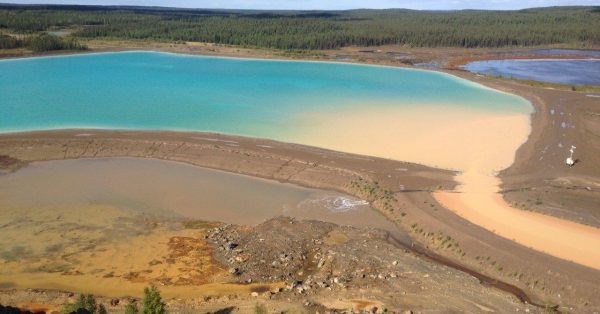Twenty years after it shut down and 16 years after work began, remediation of the Ruttan Mine east of Leaf Rapids is complete, the provincial government said Aug. 19.
The $45-million project began in 2006, four years after the mine closed.
“Our government has made a strong commitment to expedite the cleanup of orphaned and abandoned mine sites to help protect our environment, and the completion of this major initiative at the Ruttan Mine is another significant step toward that goal,” said Environment Minister Jeff Wharton in a press release.
Exposed parts of what were once the mine’s tailings management areas were covered with well over one million cubic metres of clay as well as peat and grass to help prevent any contaminants from entering the air or water.
Contaminated water at the site of the mine, which operated for 30 years, is diverted into an open pit where it is treated before being discharged. In earlier updates on the mine remediation project, the province said that about 5.5 million cubic metres of water will have to be treated every year for five years to complete that work.
In the spring, the province announced that the construction phase of remediation had been completed at the Sherridon Mine, another one of five priority orphaned and abandoned mines sites, along with Ruttan, the Lynn Lake Mine, also known as the Farley Mine, the Gods Lake Mine and the Central Mine in Bissett. The government plans to spend $50.7 million on these five sites over the next five years.
Established by the province in 2000, the Abandoned Mine Site Rehabilitation Program is intended to deal with 153 such sites in Manitoba. Orphaned and abandoned mine sties are those that are no longer in operation and with owners who can’t be found or are financially unable to undertake remediation work. Prior to the Aug. 19 announcement, remediation had been completed at 39 high- and moderate-risk sites, which are now assessed as low-risk and only in need of periodic monitoring under a long-term care, maintenance and surveillance program.
In order to operate mines now, companies must obtain Environment Act licences, develop closure plans and provide financial securities before starting projects in case the government has to take responsibility for cleaning up the sites after operations cease.
In addition to covering tailings, remediation work can also include capping shafts and sealing other mine openings as well as debris cleanup.




